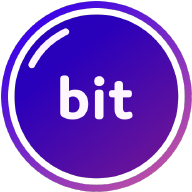Design Philosophy
- @material-ui/core:
Material-UI is built around Google's Material Design principles, which emphasize a clean, modern aesthetic and intuitive user interactions. The components are designed to provide a consistent look and feel across applications, making it easier for users to navigate and interact with the interface. Material-UI also offers a robust theming system to customize the appearance while maintaining adherence to Material Design guidelines.
- @chakra-ui/react:
Chakra UI embraces a design philosophy centered around simplicity and accessibility. It provides a set of components that are easy to use and customize, allowing developers to create beautiful interfaces without extensive design knowledge. The library focuses on building accessible components that adhere to WAI-ARIA standards, ensuring that applications are usable for everyone.
Customization
- @material-ui/core:
Material-UI provides a powerful theming capability that allows developers to customize the default Material Design styles to fit their brand. It includes a comprehensive set of styling options, including CSS-in-JS solutions, which enable fine-grained control over component styles. However, customizing Material-UI components can be more complex due to the extensive API and design guidelines.
- @chakra-ui/react:
Chakra UI offers a highly customizable theming system that allows developers to define their own design tokens, such as colors, fonts, and spacing. This flexibility enables the creation of unique designs while maintaining consistency across components. The use of styled-system makes it easy to apply responsive styles directly to components, enhancing the overall user experience.
Accessibility
- @material-ui/core:
Material-UI also considers accessibility in its components, but it may require additional effort from developers to ensure compliance with accessibility standards. While many components are accessible out of the box, customizing them may lead to accessibility issues if not handled correctly.
- @chakra-ui/react:
Chakra UI places a strong emphasis on accessibility, ensuring that all components are built with ARIA attributes and keyboard navigation in mind. This focus on accessibility helps developers create applications that are usable by individuals with disabilities, making it a great choice for projects that prioritize inclusivity.
Community and Ecosystem
- @material-ui/core:
Material-UI has a large and established community, with extensive documentation, tutorials, and resources available. It boasts a rich ecosystem of additional components and libraries that integrate seamlessly with Material-UI, making it a popular choice for developers looking for a comprehensive solution.
- @chakra-ui/react:
Chakra UI has a growing community and ecosystem, with a focus on providing documentation and resources that help developers get started quickly. The library is actively maintained, and its community contributes to a range of plugins and extensions that enhance its functionality.
Learning Curve
- @material-ui/core:
Material-UI has a steeper learning curve due to its extensive API and adherence to Material Design principles. While it offers powerful features, developers may need to invest more time in understanding the library's components and customization options.
- @chakra-ui/react:
Chakra UI is designed to be intuitive and easy to learn, making it suitable for developers of all skill levels. Its straightforward API and focus on simplicity allow new users to quickly grasp how to use the library effectively without a steep learning curve.














